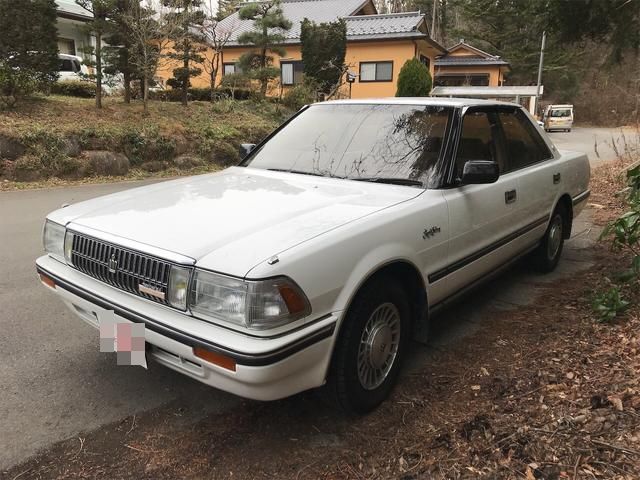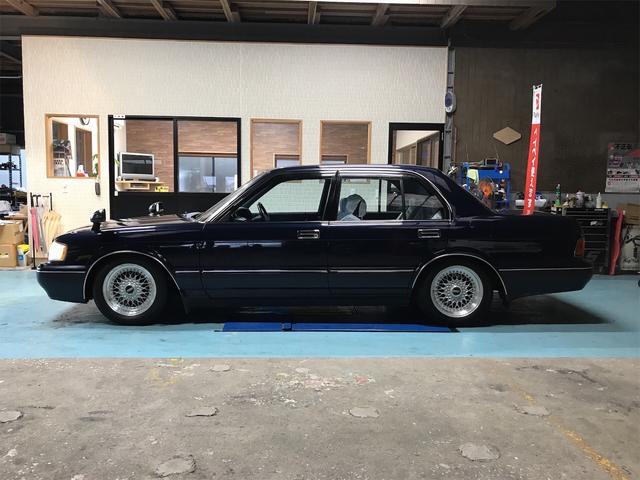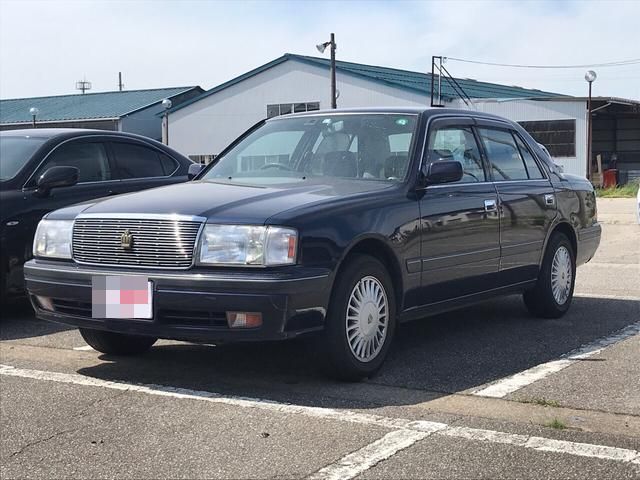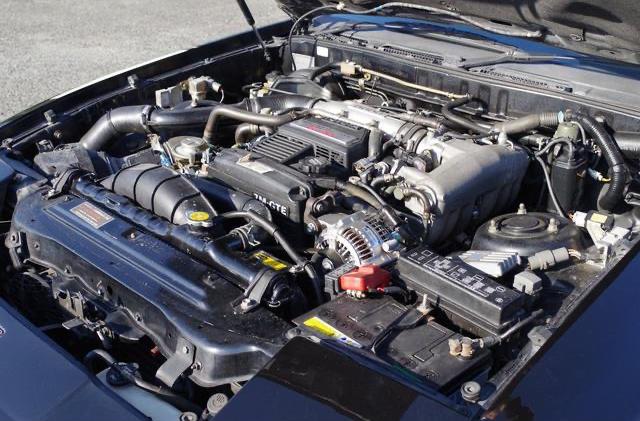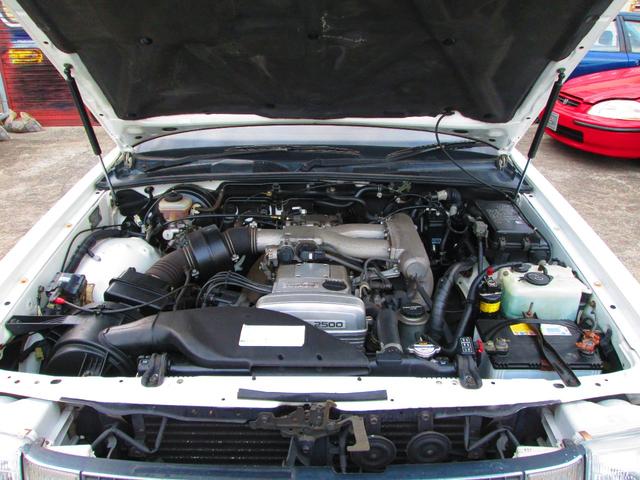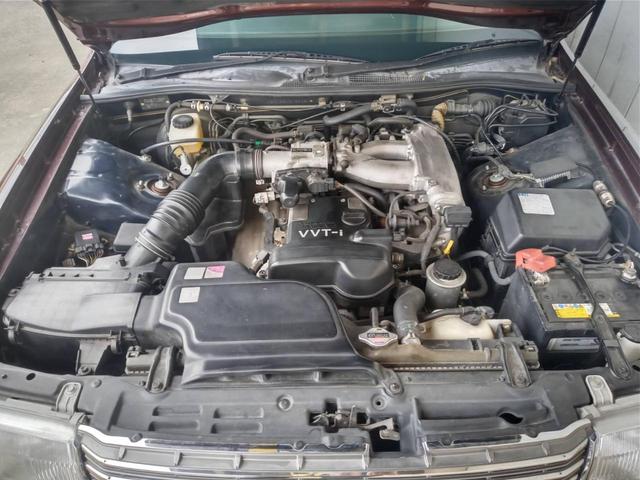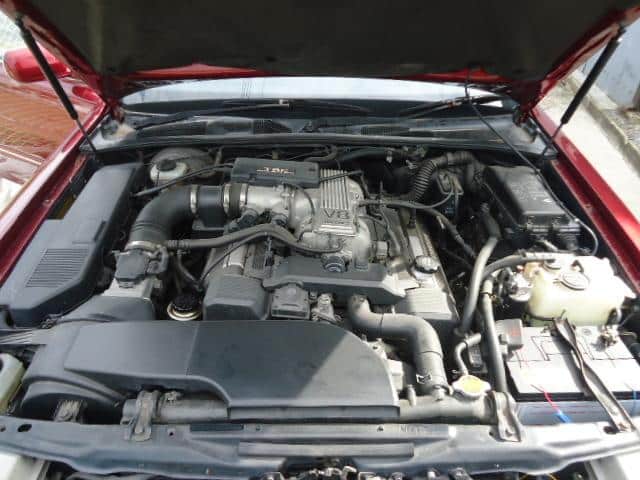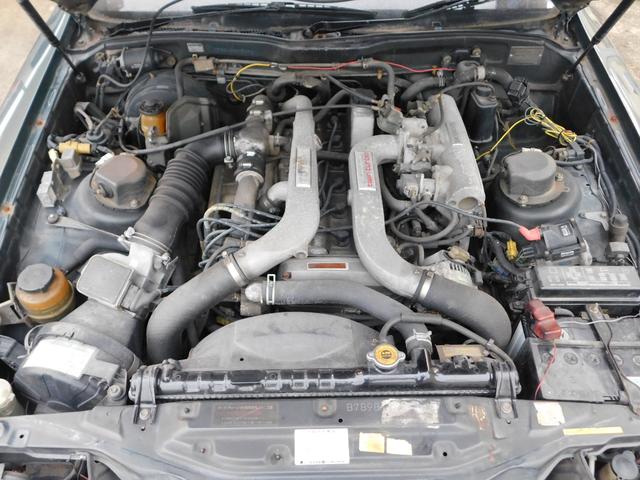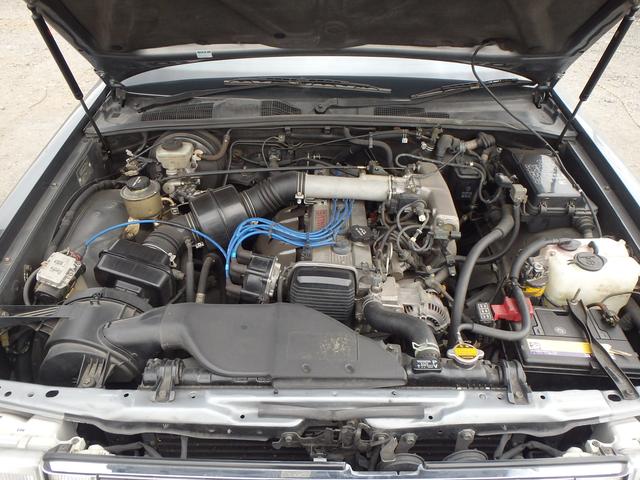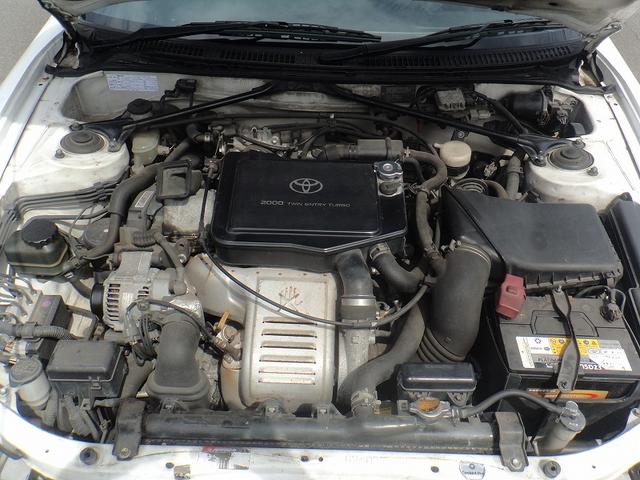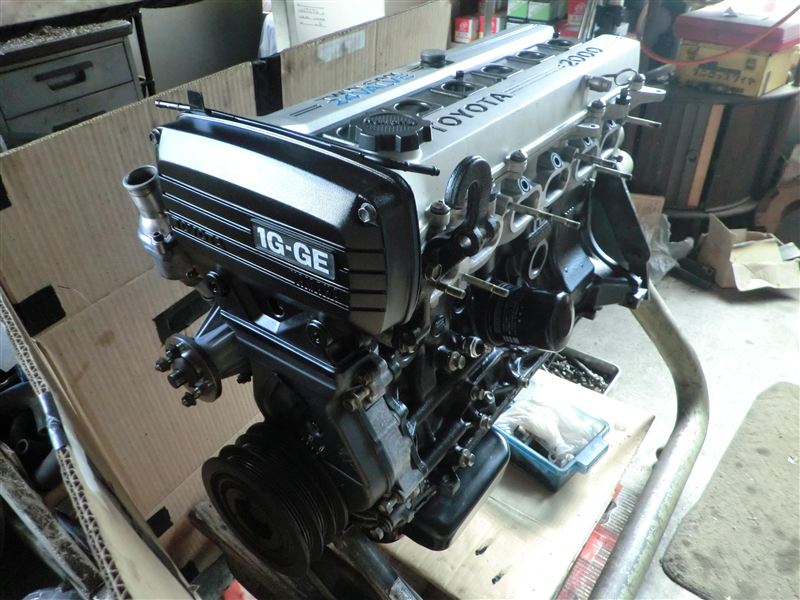The variety of engine options and grade levels for Toyota Crowns are bewildering, but just to give you a rough idea of what sort of power to weight and torque to weight ratios you’ll be looking at with these cars, we can say, very roughly, that if you go for a Crown with the 1UZ-FE V8, you’ll be getting a car with 260ps-to265ps coming in in the low 5,000s in the RPM range. Torque will be 36 to 37kg/m, coming in well below 5,000rpm. The car will weigh around 1,650kgs (3,630lbs) give or take, and so you’re looking at a nice luxury car that’s not too big and is giving you a power to weight ratio of 6.2:1 (each ps unit of horse power carrying 6.2kgs of car) and a torque to weigh ratio of 44.6:1 (each kg/m unit of torque pushing 44.6kgs of car). Numbers like this tell you that you can expect good grunt from zero to upper highway speeds.
Say you decide to go for a three liter Crown with the 2ZJ-GE: you’d get a weight saving of around 50kgs (110lbs), depending on options, and a power output of 225 to 230ps coming on at 6,000rpm with your torque of 29kg/m at well below 5,000. That doesn’t tell you the whole power curve, though, and these JZs are noted for their nice low end torquey feel, as I can attest to: they grunt really nice from zero at a stop light or entering from a side road.
With a three liter 2JZ-GE Crown in the series that we are looking at here, for example an early ’90s S130, you’ll be getting a power to weight ratio of around 7:1 and a torque to weight ratio of around 56:1. No slouch indeed.
If you go for a Crown that sports the 1JZ, you’ll save a further 50 kilos (110lbs) in weight, get a bit better gas mileage, and have a car that’s giving you a power to weight ratio of 8.7:1 and a torque to weight ratio of 65.4:1, based on your 1ZJ-GE putting out 180ps at 6,000 and 24kg/m at under 5,000rpm; the same rpm range as with the 2ZJ.


